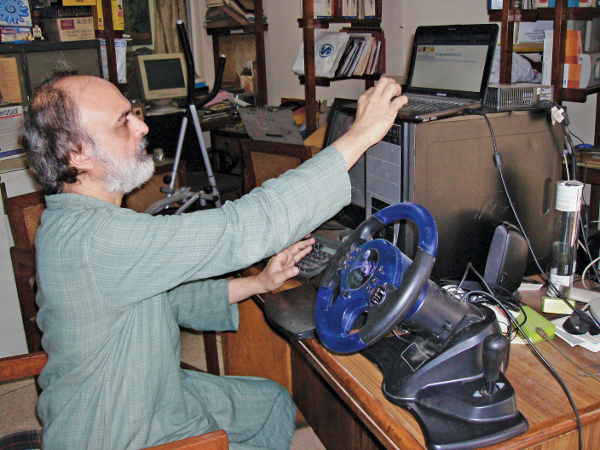
DECEMBER 2010: Arpit is a child suffering from cerebral palsy—a condition that restricts him from physical (motor) activities that are quite normal to human beings. He also finds it hard to speak and move.
In today’s world, we all are aware of the role that computers have begun to play in our lives. Computers have evolved from being a bulky, stationary machine to handheld devices enabling people work on the move. The dependence on computers has increased so much that being computer illiterate is considered akin to being illiterate altogether. But the situation is very different for people like Arpit, who are suffering from grave disabilities and for whom computing devices offer little help.
It is this challenge that motivated Arun Mehta, a passionate engineer and president of Bapsi, to develop a one-of-a-kind solution to help Arpit learn the basics of communication using computers. In no time, the child was able to type his name, identify pictures, and play games, among other things—just like normal people do.
The technology that drives the ‘wheel’
Mehta, an ex-employee of Siemens AG, is a vociferous supporter of open source platforms. He developed the tool, christened ‘Arpit’s Wheel,’ using simple computing hardware and FOSS (free and open-source software) tools and frameworks, which later won him the Manthan Award in 2008 in e-inclusion category.
At first glance, it is hard to believe that the tool is meant to aid a serious case of cerebral palsy. The set-up includes nothing but normal computer hardware, including a PC monitor, CPU, speakers, etc. However, for an input device, Mehta has replaced the traditional keyboard and mouse with a gaming console that we normally see kids playing racing games with. “This is because Arpit cannot control his hand movements, which makes it extremely difficult for him to type or navigate using a mouse,” explains Mehta.
Arpit’s Wheel runs on a software developed by Mehta. The software is called Skid, and it, along with the framework which it is built on (Ruby on Rails), interacts with the Internet browser (a version of Firefox). Through a secure Java shell (JSSH), inputs from the game console act as clicks on the web page being displayed in Firefox.
But what is Skid?
The Skid software is mainly a combination of many smaller modules that help the child communicate using computers. The basic modules start by helping the child do elementary tasks such as identify pictures, pick the odd one out, spell words and play educational games. As soon as the child becomes comfortable with the software and different modules, the existing modules could be redesigned or new modules created for advanced communication such as email, instant messaging and Web chat.
According to Mehta, Skid is free to download, and can be used to develop a number of applications. But what was the reason for going with the Ruby on Rails framework? “We were looking for something that would be easy to develop applications on. Another consideration was to work in a language in which it would be easier for others to build modules and functionalities as well,” says Mehta. Apart from this, it is based on common Web standards like HTML and HTTP. Web standards do not fade away with time, as do other technologies, which go through their different life cycles. Part of this work philosophy comes from Mehta’s stint with Siemens—a German company where he learnt that every technology should ideally be designed to be ‘future-proof.’
However, while designing modules for Skid, one of the things to be kept in mind is the nature of the disorder, its level and the age of the child, he adds.
The future
Mehta feels the future of this communication system lies in adapting and moving it onto mobile phones, mainly because mobiles offer a variety of ways to input data and interact with the device. He elaborates: “Modern smartphones have touchscreens, physical keypads, camera input, GPS, accelerometers which sense change in movement and orientation, voice recognition, and a whole lot of features that can be used to input data into the system and get the desired results.”
Some of the recent versions, like the iPhone 4, come with a gyroscope, which can accurately measure a user’s motion and direction changes in 3-D space. Such features can be exploited to build apps that would further aid the learning of children with special needs.
Mehta also thinks that in order for this communication platform to gain more recognition and acceptance, it needs to be further refined on a commercial scale, in consultation with specialists like psychologists, neurologists and top-notch medical and engineering colleges.
Certainly, if adopted on a large scale, Arpit’s Wheel has the potential to change the lives of millions of disabled children. A celebrated physicist like Stephen Hawking, who himself suffers from a type of neurological disorder, can afford to have a sophisticated program that helps him talk. But people with limited means can benefit immensely from inexpensive innovations like Arpit’s Wheel, which is indeed a commendable step forward to help disabled children lead a normal life.
For reading latest innovation articles: click here
The author is a technology enthusiast with an interest in mobile phones, gaming and free software. He also loves dabbling with his video camera occasionally








